The flowering perennial Amaryllis is part of the Amaryllis family. Basal leaf plates of an elongated shape reach about 0.6 m in size. They grow in two rows. During flowering, large umbrella-shaped inflorescences are formed on the bush, each of which contains from 6 to 12 flowers. They can be painted in a variety of colors, from bright red to white.
This plant is native to South Africa, where it can be found in the forests. And amaryllis also grows in Australia. Such a bulbous plant is distinguished by an average rate of development, while flowers appear on the bush before the leaf plates grow. If the amaryllis bulb is looked after correctly, then its life expectancy can be about twenty years.
Amaryllis needs special growing conditions, and it also needs proper care. This perennial in one pot can grow from three to five years.
Content
Brief description of cultivation
- Temperature... During intensive growth, the room should not be hotter than 23 degrees. The optimum temperature during the rest period is around 10 degrees.
- Air humidity... Not more than 50 percent.
- Illumination... A long daylight hours are required, while the light should be bright and diffused. A sill with a south orientation is best suited.
- Watering... Reacts extremely negatively to moisture stagnation in the roots. Watered once or twice a week. During the rest period, the number of waterings is reduced.
- Substrate... The soil mixture needs nutritious and well-drained soil. At the bottom of the pot, a drainage layer is made with a thickness of 30 to 40 mm.
- Fertilizer... They are fed with liquid mineral fertilizer about 1 time per 30 days. This is done only during the growing season.
- Transfer... It is carried out when the rest period ends, and they do it 1 time in 4 or 5 years.
- Reproduction... Bulb children and seed method.
- Care features... The dormant period is the last spring and first summer weeks. In the autumn-winter period, the bush feels a strong lack of light, so it is provided with additional lighting. The bulbs contain poison, and therefore it is necessary to work with them with gloves.
Caring for amaryllis at home
Landing
Before planting the amaryllis bulb in a flowerpot, you should carefully cut off all rotten parts.Then the bulbs are kept in a pinkish solution of potassium permanganate for some time, after which the cut sites are treated with coal powder. It is necessary to deepen the bulb into the substrate so that 1 / 3-1 / 2 of its part rose above its surface. If this is not done, then the bulb or flower arrow may die. For a freshly planted bulb, it is recommended to use the bottom watering method (through the pallet).
The plant can be planted in open ground, and the land is chosen for it saturated with humus. A bush planted in the garden closer to summer will bloom much more luxuriantly and form a larger number of children, compared to amaryllis growing in a pot.
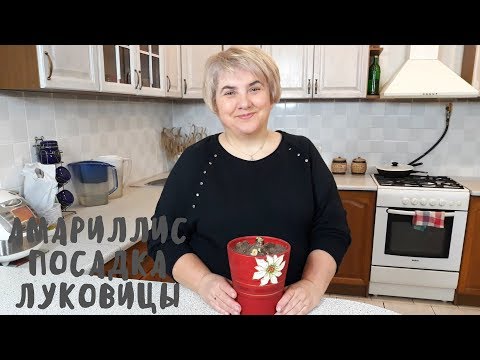

Watch this video on YouTube
Bloom
Often, inexperienced growers confuse indoor amaryllis with hippeastrum. To avoid confusion, you need to remember the following features of amaryllis:
- its petals are not so wide;
- there are no double flowers;
- the maximum number of flowers in the inflorescence of the hippeastrum is 6, and in the amaryllis - 6–12;
- in diameter, the bulb reaches a maximum of 60 mm, while the formation of children occurs between its scales;
- a dense peduncle is never hollow.
As a rule, the bush blooms in late August or early September. At this time, large, showy flowers are formed on it, which can be painted white, as well as various shades of red and pink. There are also bicolor flowers decorated with stripes. The flowering of the bush is observed in a leafless state and it lasts about 2 months. Bulbs over 15 years old no longer form flowers.
Temperature
This plant reacts negatively to sudden changes in temperature. In the warm season, it feels best at temperatures from 18 to 22 degrees, and the humidity should be moderate. During the dormant period, the flower should be in a cool place - from 8 to 10 degrees.
Air humidity
If the room has normal air humidity, then the bush does not need to be moistened with a spray bottle. This is done only when the humidity is low, and the soil mixture in the pot dries out very quickly. During the dormant period, when the plant is resting, it needs a dry period. So that the earthen lump does not dry out completely, the substrate is slightly moistened with a sprayer once every 3 weeks.
Illumination
Please note that regardless of the time of year, the daylight hours must be at least 16 hours every day. This is a prerequisite for the normal development of the bush. Since the flowering of amaryllis is observed in the cold season, the bush at this time most often does not have enough light. This can lead to a complete lack of flowering. The flower needs additional lighting, while it feels most comfortable on the windowsill of southeast or south orientation.
Watering
After a flower arrow 5-10 centimeters long appears at a dormant bush, the frequency and abundance of watering should be increased. The fact is that this is a sure sign of the beginning of the growing season.
In order to prevent stagnation of moisture in the soil mixture, it is recommended to use bottom irrigation for amaryllis (through the pallet). If watering is done in a simple way, then do not forget to pour excess liquid from the container, otherwise rot may appear on the root system.
Pot selection
The pot should be chosen stable and heavy, it should be narrow, and at least 20 centimeters high. As a rule, the bush builds up a volumetric root system, in this regard, a wide and low capacity will not allow the leaf plates to develop normally, and later the peduncle.
During the amaryllis transplant, the pot is replaced with a new one, and in diameter it should be only 20-30 mm larger than the old one. Remember that amaryllis blooms much better in a "cramped" pot.
Substrate
A soil mixture suitable for a given plant must be fertile. In order to prepare a soil mixture with your own hands, you need to combine leafy, soddy and humus soil with sand (1: 1: 1: 1). You can, if you wish, buy a ready-made universal substrate for bulbous plants. Do not forget to make a drainage layer about 30 mm thick at the bottom of the pot; expanded clay, pebbles or brick chips are suitable for this.
Fertilizer
Top dressing is carried out only during active growth. They are carried out 1 time in 4 weeks, and for this, organic matter and complex mineral fertilizer are used alternately. As an organic fertilizer, you can take a solution of bird droppings or mullein.
The composition of mineral dressing should include a minimum of nitrogen and more potassium and phosphorus. The fact is that a substrate saturated with nitrogen can harm amaryllis. When the flower is at rest, it is not fed.
Amaryllis transplant
After the bush has faded and its peduncle wilted, the plant can be transplanted. If transplanting is not carried out, then annually it is necessary to replace the top layer of the substrate in a pot 30 mm thick with fresh fertile soil mixture. The frequency of amaryllis transplants is 1 time in 3 or 4 years. Transplant rules:
- Water the bush abundantly when there are several days left before transplanting.
- After the bush is pulled out of the container, you should carefully but carefully examine the root system, while cutting out those areas on which there is rot.
- Places of cuts and other problem areas should be sprinkled with coal powder or treated with another disinfectant.
- Carefully separate the daughter shoots from the bulb. If you leave them, then the bush will spend most of its energy on the growth of children and will not be able to please you with beautiful flowers.
- Place a 30 mm drainage layer on the bottom of a tall container. Fill it 2/3 full with the prepared soil mixture.
- Cover the substrate with a 20 mm layer of sand and center the onion. Carefully fill it with soil mixture so that only the bottom is covered.
Thanks to such a planting, an injured, decayed or "tired" bulb can quickly gain strength. As a result, the amaryllis will be renewed and it will begin to grow actively.
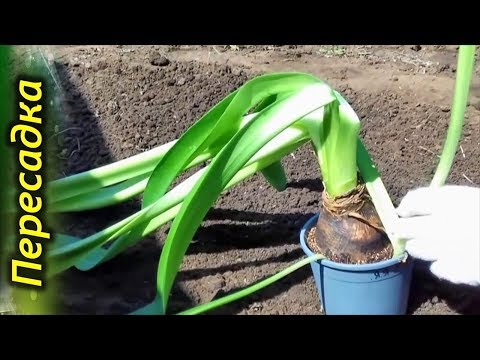

Watch this video on YouTube
Pruning
Leaf plates that have begun to dry are not cut off. The fact is that during wilting, nutrients from such a leaf pass into the bulb. As a result, the bulb accumulates useful substances that can be spent on the next flowering. If the half-withered leaf plates do not die off completely for a long time, then they should be carefully bent to the ground or cut off at the very base of the bulb.
Post-flowering care
When the bush fades and the inflorescences wither, it will begin a dormant phase. If you properly prepare the plant for the dormant period, this will significantly extend the life of the bulb.
The first step is to carefully cut the peduncle at the base of the bulb. A gradual reduction in watering is also carried out, because a faded bush needs less moisture.
Transfer the flower to a cool and dark place. For two to three months it is not fed or watered. Only occasionally is it necessary to slightly moisten the substrate with a spray bottle. A sure sign of the end of the dormant period is the appearance of a young sprout or a flower arrow. After that, the bush is transferred to a well-lit place with a higher air temperature and, if necessary, transplanted into a larger container.
Reproduction methods
Growing from seeds
Indoor amaryllis can be grown from seed, but there are a few things to consider:
- new bushes will not retain the varietal characteristics of the parent plant;
- the bulb will remain young for a longer time;
- flower arrows will appear on the bush after 5 or 6 years.
Seed material must be freshly harvested. It retains good germination for about 40 days. It is undesirable to dry the seeds, because this negatively affects their germination.
For sowing, use a substrate consisting of sand, humus, leafy and soddy soil (2: 1: 2: 1). Sowing is carried out in a moistened soil mixture, while the seeds are covered from above with a thin layer of substrate (thickness not more than 0.5 cm). In order for the seedlings to appear as quickly as possible, the crops are placed in the heat - from 23 to 25 degrees. The first shoots should appear after a couple of months. When the plants have two true leaf plates, they are dived into separate containers with a volume of 100 milligrams.
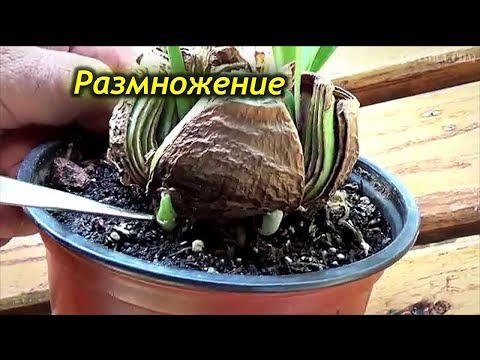

Watch this video on YouTube
Amaryllis propagation by bulbs
It is much easier and faster to propagate amaryllis with daughter bulbs. They are separated from the parent bulb during bush transplantation. Daughter bulbs are planted in a separate pot, while the soil mixture should be the same as for growing an adult amaryllis. Young bushes are characterized by rapid development. After 2 years, the bulbs reach the size of an adult bulb. Flowers appear for the first time 2-3 years after planting.
Why amaryllis does not bloom
Often, inexperienced growers complain that home amaryllis does not bloom. There may be several reasons for this:
- the pot is too wide: this leads to the active growth of daughter bulbs, as a result, the bush does not have the strength to form inflorescences;
- feels a lack of nutrients;
- too poor lighting during the period of active growth;
- lack of a rest period;
- the bush is affected by a fungal disease or pests have settled on it.


Watch this video on YouTube
Possible problems
With improper care or inappropriate growth conditions with amaryllis, the following problems may arise:
- The foliage becomes faded and withers... These are signs of rot on the plant.
- The flowers turn black... The room is too humid and too cold.
- Leaf plates are marked by slow growth and fly around over time... An amaryllis bug has settled on the bush.
- White spots appeared on shoots and leaves... The flower is affected by mealybug.
- Rot has appeared on the bulb... This is the result of the vital activity of an onion mite or a daffodil fly.
- Brown spots appeared on the foliage... A sign of the appearance of a false shield.
- Yellow foliage... Moisture stagnant in the roots or aphids have settled on the bush.
Thrips can also harm the plant.
Types and varieties of amaryllis with photo
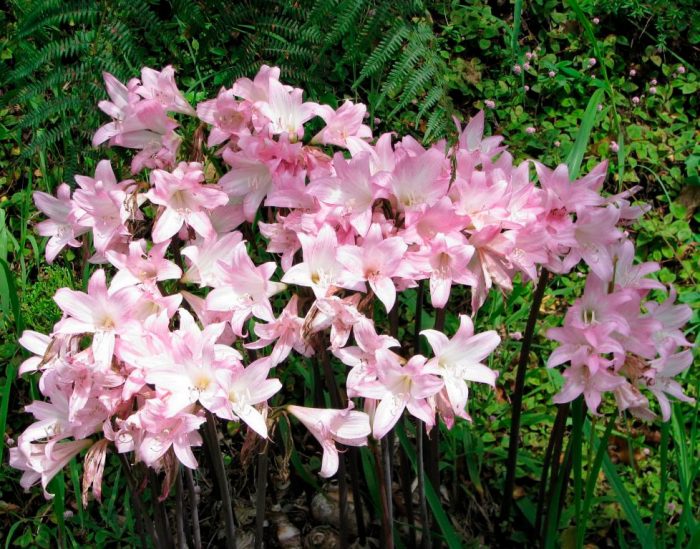

Amaryllis belladonna, or Amaryllis beautiful (Amaryllis belladonna) - not so long ago it was believed that this is the only type of amaryllis. The bulbs of this plant reach about 80–100 mm in diameter, and the length of the leafless peduncles is from 0.6 to 0.7 meters. The six-petalled, pleasant-smelling flowers can be colored in various shades of pink, cream or lilac.
The best varieties:
Durban (Amaryllis Durban)
Bell-shaped flowers are distinguished by a white center at the base.
Parker (Amaryllis Parker)
Plants with bright pink flowers with a yellow center are in greatest demand.
Vera (Amaryllis Vera)
The flowers are pinkish with a pearlescent tint.
Snow Queen (Amaryllis Ice Queen)
The petals are white with a cream-colored rim.
Grandior (Amaryllis Gervase)
The flowers have an amazing color: on the petals there is a gradient transition from dark pink to white.
Red Lion (Amaryllis Red Lion)
Showy flowers have a bright purple color.
Minerva (Amaryllis Minerva)
The middle of the red flowers is white and has a star-shaped shape.
This is only a small part of the amaryllis varieties.To date, more than 90 varieties of such a plant are known.
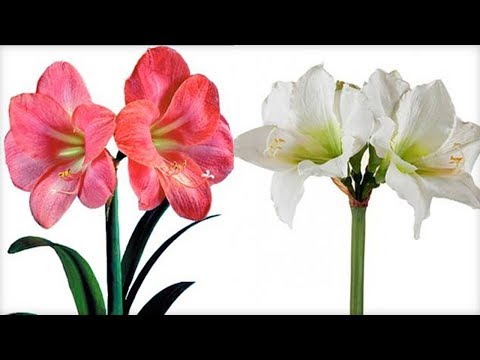

Watch this video on YouTube

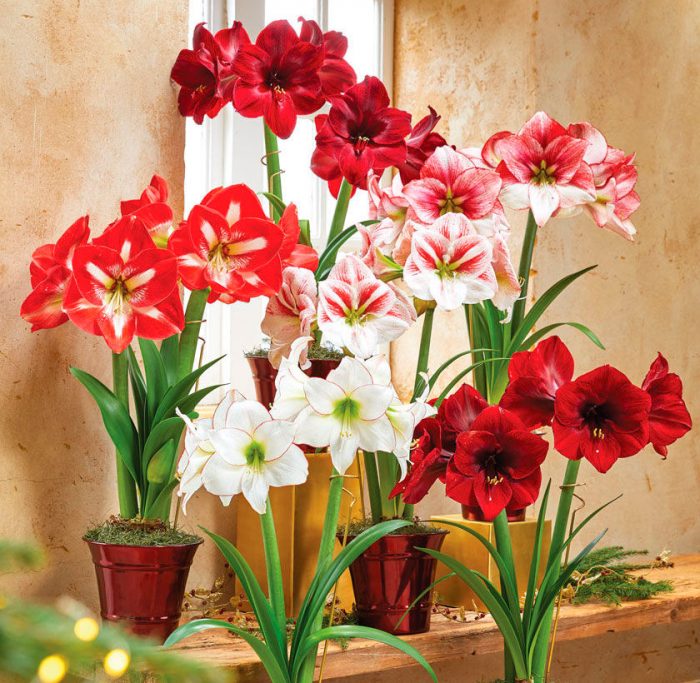
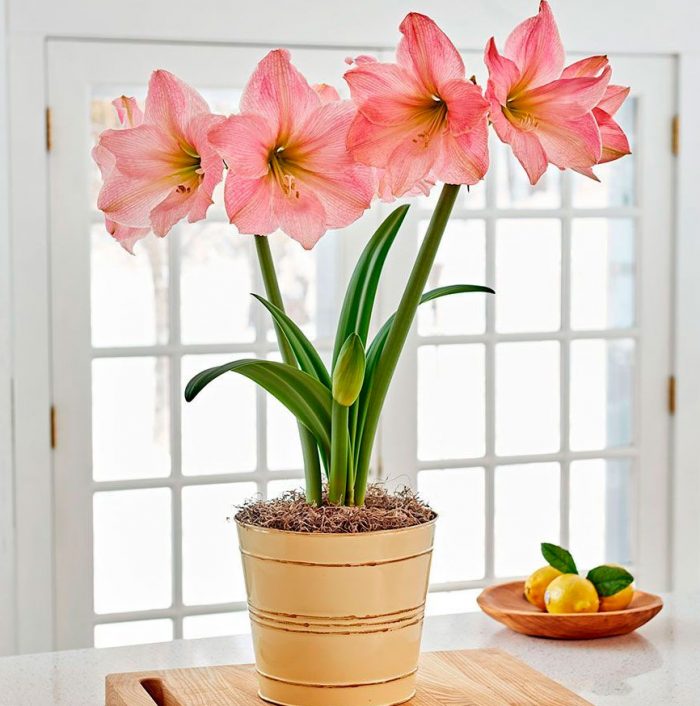


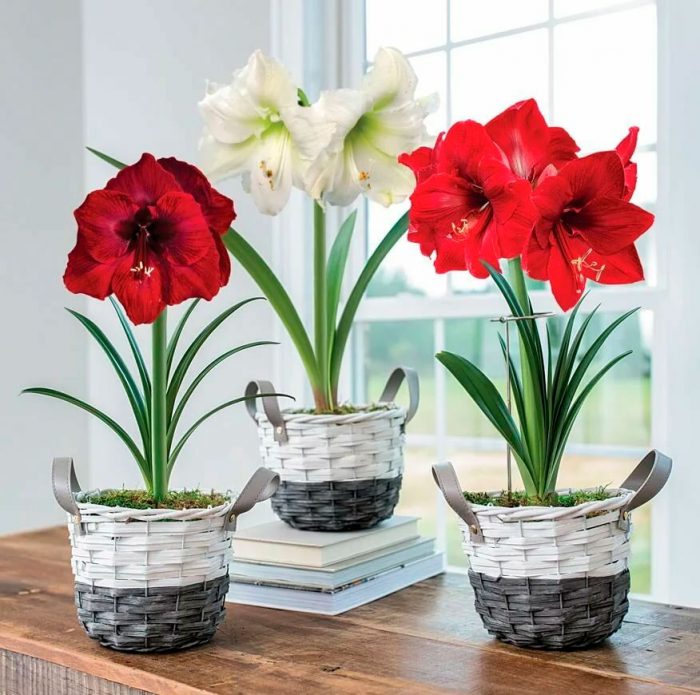


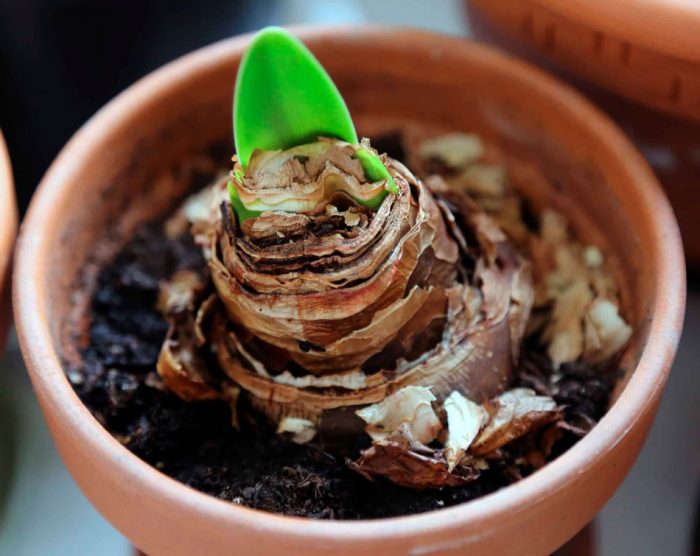

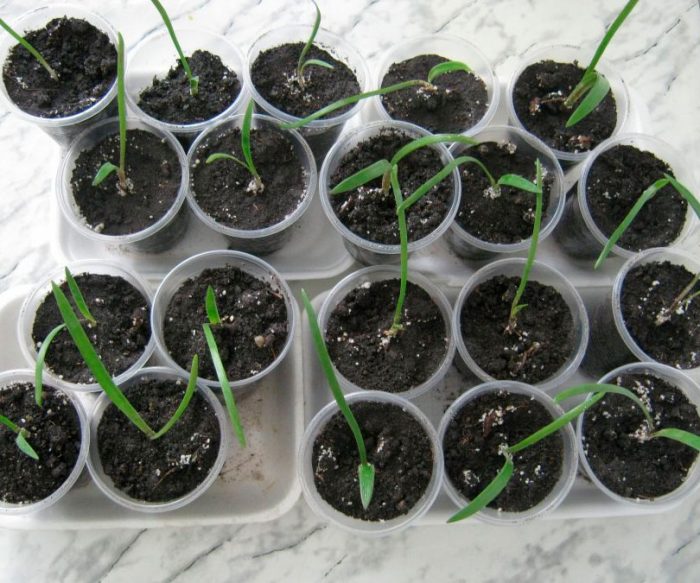


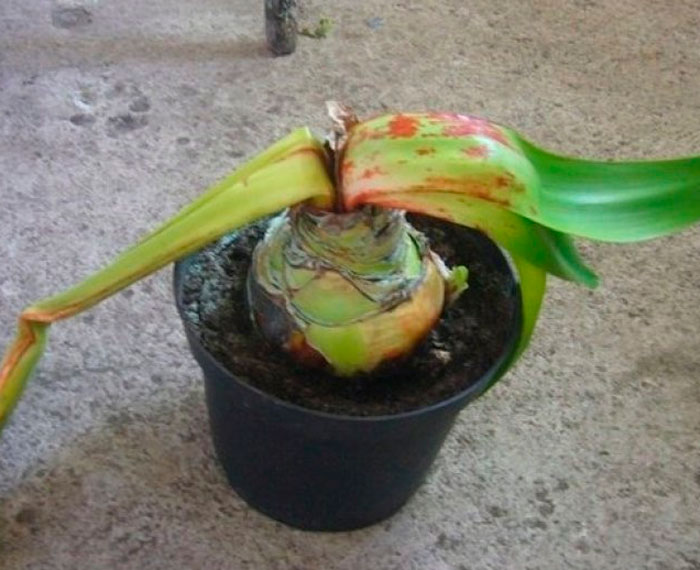
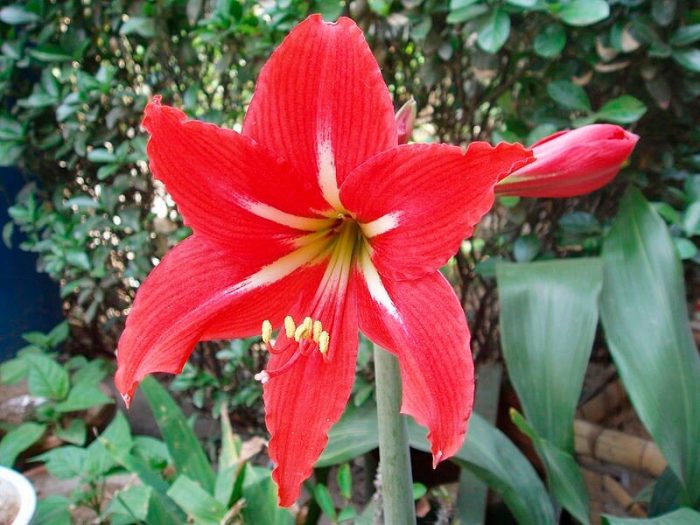
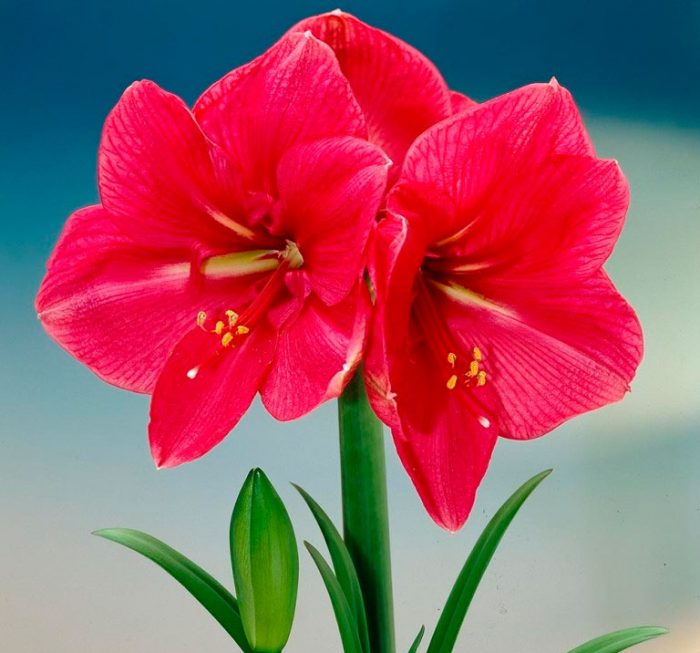
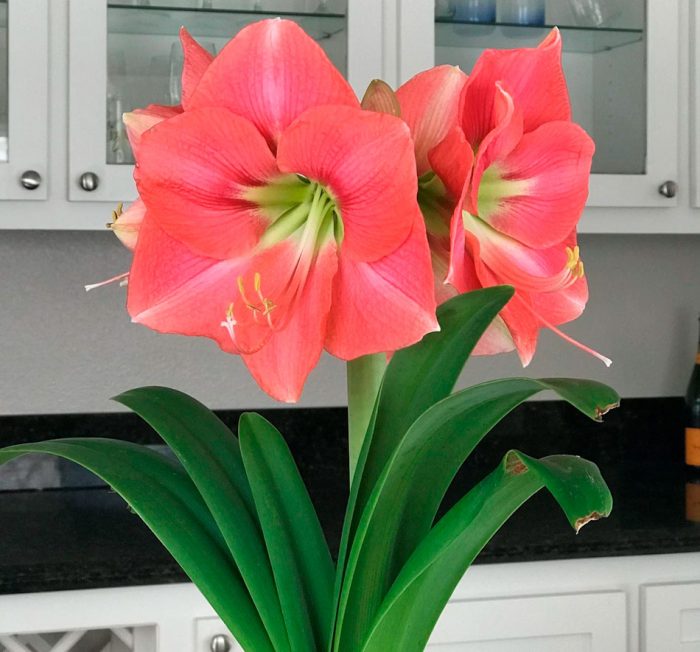
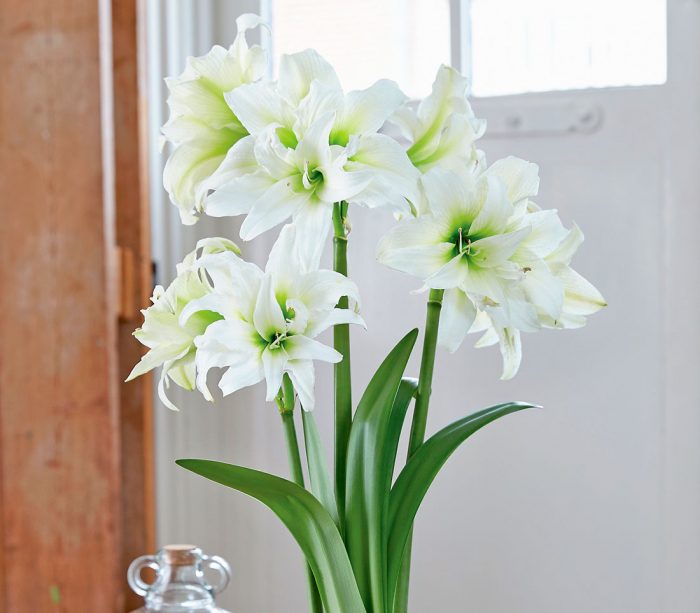
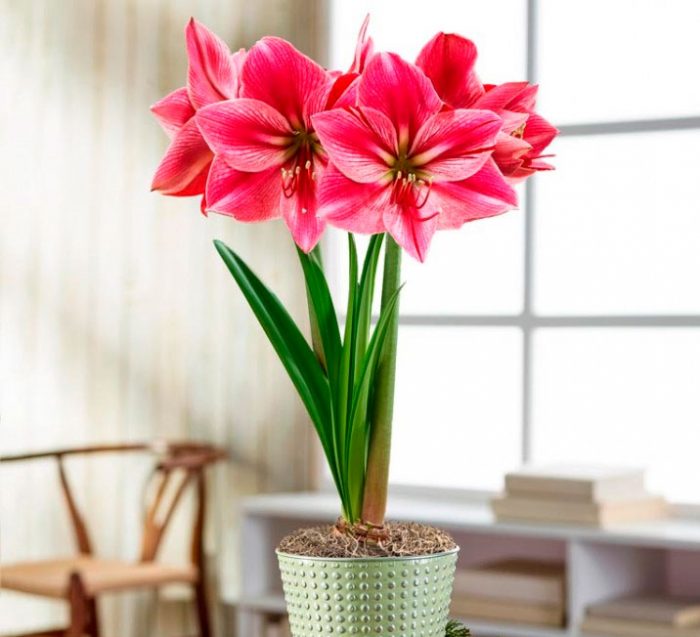
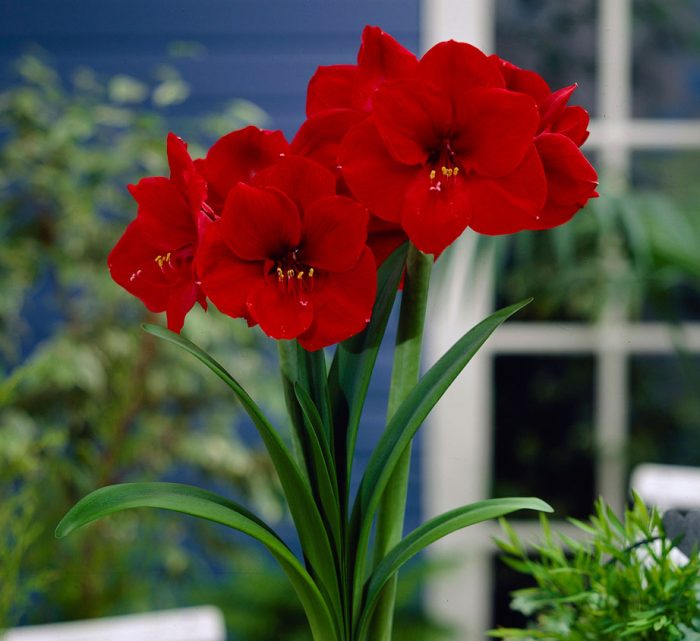
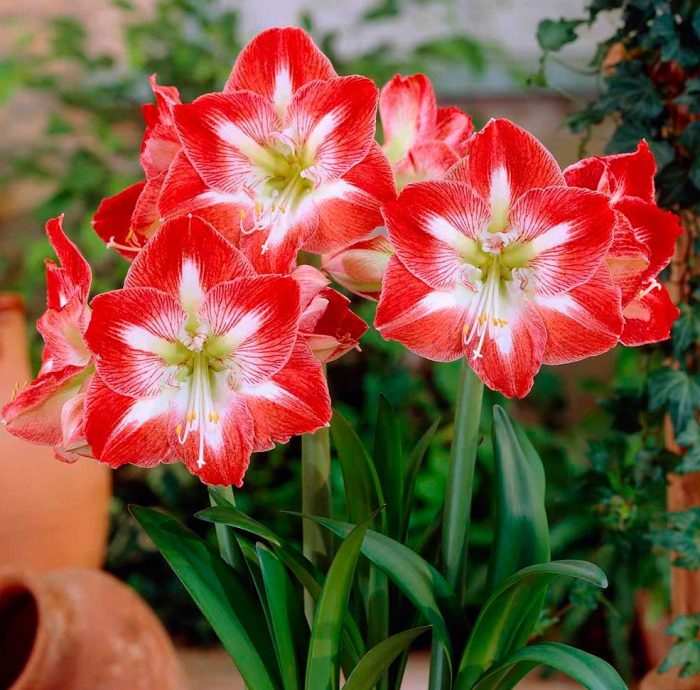
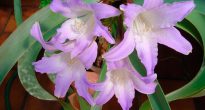



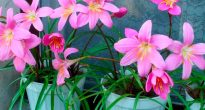





For some reason, I first have leaves and then a peduncle is released and bloomed in January. How long will it take before the foliage and peduncle die off?
And mine is not blooming, already 5 steel and only a fox!
Me too. And my grandmother's in the north blooms by March 8, and this one (she gave me) also bloomed in the same way, maybe the climate change?
How poisonous are these flowers?
Mine bloomed by February 23, northwest window. I planted it in a large pot, because I didn't know. But he is well done, has bloomed in spite of everything?
And I was transplanted into another pot. There were a lot of roots. I cut everything off. Leaving only 2 centimeters. But what was my surprise. Only the peduncle came out. And so flourishing, just a miracle. And not just one leaf. And before it bloomed rarely and was in greenery all the time. I made a conclusion. The bulb should be grounded only 1/3 into the ground. And most importantly, cut off the extra root. The flower turned out to be super large and bright.
Do not prune the roots under any circumstances. NEVER! The flower emerges from a flower bud located in a bulb. The supply of nutrients determines how many peduncles the bulb will release. The more leaf plates are grown in the previous cycle, the more peduncles there will be. This alone affects flowering. And the peduncle may appear without roots, but at the same time you will have to water it, starting with a minimum dose, so as not to provoke rot. The roots will grow back by gaining access to moisture.
I looked and read all the comments and did not find the answer to my problem. I didn’t replant for several years, only cut off the leaves and didn’t put it away — I always stood at the window. Now he has many long leaves. What to do? There are 3 onions in one pot: one large and 2 smaller. I decided to multiply, but I don’t know how. Very, very many roots, almost without soil. Soaked and now I do not understand how to divide correctly.
I ASK FOR ADVICE because the video does not say anything about it. YOU ARE WELCOME. SOS!
I got 4 from one onion. In 4 years she gave birth to three babies. It always blooms in March. The color is red and white. I never dig out of the pot for the winter, I only cut off the leaves. I transplant and change the land once a year.
Mine is almost blooming, today is November 10th.
I would be very grateful if you could tell me what to do with my handsome man. It blooms gorgeous, started up a second peduncle (it's a pity you can't attach a photo), but the leaves began to turn red and die. Even new leaves have stains. How to save? Maybe after flowering until spring to retire to rest? Prompt lovers of this beautiful flower. Thank you all in advance)))
Urgently cut the peduncle with the flower and put it in the water. Dig up the onion and look for rot. Red is the most dangerous disease! We must save the onion! Peel the onion to a healthy scale! Also shorten the leaves to a healthy plate. Look especially closely at the bottom! Remove roots with redness and rot! Clean all sore spots with a clean knife, dry at room temperature, treat with thick potassium permanganate. Withstand a couple of days or even more. Plant in NEW soil and a CLEANEST pot. Watering is minimal and through the pallet!
Valentine, hello. My flower faded half a year ago, the leaves also all fell off. The bulb is white without rot, but there are no roots on it. Can the flower be saved somehow?
I read with interest all the comments and especially the answer of Valentina A. I have a question: it bloomed in January, there are a lot of high leaves, what should I do with it next? Thank.
After flowering, I removed the bulb in a dark and cool place, and when I took it out after a couple of months, the bulb became smaller in size. It was about 5 cm, and now it is 3 cm. Several layers dried up into a husk. But the bulb is alive. Tell me how to avoid drying out of the bulb in the future?
Amaralis scored an arrow of flowering .. and now the arrow is dry, does not bloom .. she cut the roots, transplanted ..